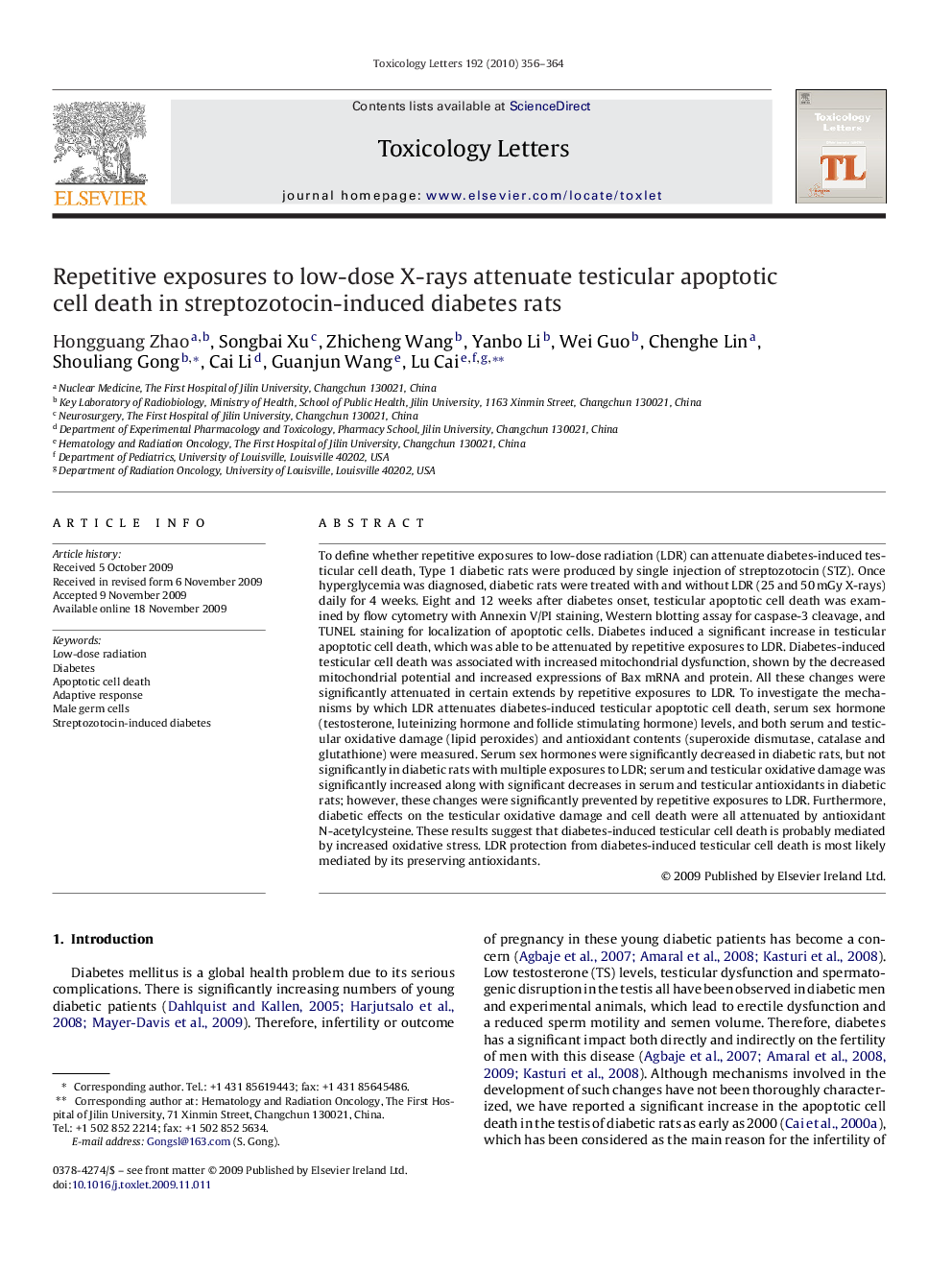| Article ID | Journal | Published Year | Pages | File Type |
|---|---|---|---|---|
| 2600651 | Toxicology Letters | 2010 | 9 Pages |
To define whether repetitive exposures to low-dose radiation (LDR) can attenuate diabetes-induced testicular cell death, Type 1 diabetic rats were produced by single injection of streptozotocin (STZ). Once hyperglycemia was diagnosed, diabetic rats were treated with and without LDR (25 and 50 mGy X-rays) daily for 4 weeks. Eight and 12 weeks after diabetes onset, testicular apoptotic cell death was examined by flow cytometry with Annexin V/PI staining, Western blotting assay for caspase-3 cleavage, and TUNEL staining for localization of apoptotic cells. Diabetes induced a significant increase in testicular apoptotic cell death, which was able to be attenuated by repetitive exposures to LDR. Diabetes-induced testicular cell death was associated with increased mitochondrial dysfunction, shown by the decreased mitochondrial potential and increased expressions of Bax mRNA and protein. All these changes were significantly attenuated in certain extends by repetitive exposures to LDR. To investigate the mechanisms by which LDR attenuates diabetes-induced testicular apoptotic cell death, serum sex hormone (testosterone, luteinizing hormone and follicle stimulating hormone) levels, and both serum and testicular oxidative damage (lipid peroxides) and antioxidant contents (superoxide dismutase, catalase and glutathione) were measured. Serum sex hormones were significantly decreased in diabetic rats, but not significantly in diabetic rats with multiple exposures to LDR; serum and testicular oxidative damage was significantly increased along with significant decreases in serum and testicular antioxidants in diabetic rats; however, these changes were significantly prevented by repetitive exposures to LDR. Furthermore, diabetic effects on the testicular oxidative damage and cell death were all attenuated by antioxidant N-acetylcysteine. These results suggest that diabetes-induced testicular cell death is probably mediated by increased oxidative stress. LDR protection from diabetes-induced testicular cell death is most likely mediated by its preserving antioxidants.
